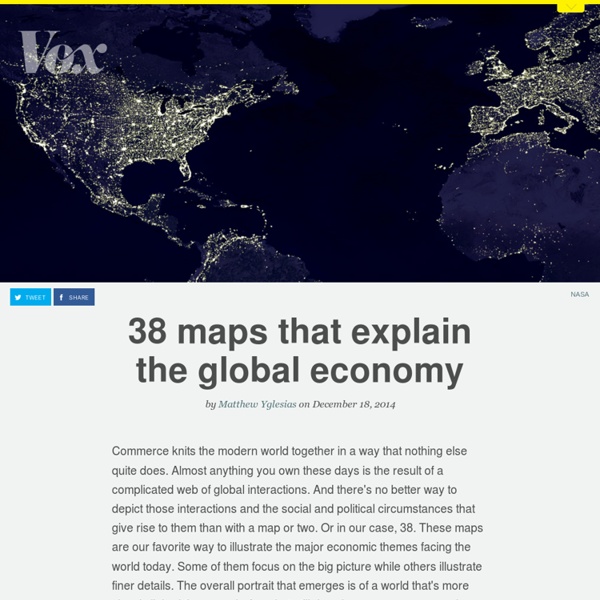Territoires Md° : dodo internet et inégalités accès mondiale
Scientists track Internet usage as it pulses across the globe daily Contact: Robert Perkins at (213) 740-9226 or perkinsr@usc.edu Researchers studying how big the Internet is have found that it “sleeps,” almost like a living creature.
China’s Record Dumping Of US Treasuries Leaves Goldman Speechless
On Friday, alongside China’s announcement that it had bought over 600 tons of gold in “one month”, the PBOC released another very important data point: its total foreign exchange reserves, which declined by $17.3 billion to $3,694 billion. We then put China’s change in FX reserves alongside the total Treasury holdings of China and its “anonymous” offshore Treasury dealer Euroclear (aka “Belgium”) as released by TIC, and found that the dramatic relationship which we first discovered back in May, has persisted – namely virtually the entire delta in Chinese FX reserves come via China’s US Treasury holdings. As in they are being aggressively sold, to the tune of $107 billion in Treasury sales so far in 2015. We explained all of his on Friday in “China Dumps Record $143 Billion In US Treasurys In Three Months Via Belgium“, and frankly we have been surprised that this extremely important topic has not gotten broader attention. Then, to our relief, first JPM noticed. Back to Goldman:
Solar irradiance
Annual mean solar irradiation (integral of solar irradiance over a year) at the top of Earth's atmosphere (TOA) and at the planet's surface Types[edit] Global Map of Global Horizontal Radiation [4] Global Map of Direct Normal Radiation [4] There are several measured types of solar irradiance. Units[edit]
The Biggest Tax Scam Ever
In July, the American pharmaceutical giant AbbVie, maker of the world's top-selling drug – the arthritis treatment Humira – reached a blockbuster deal to acquire European rival Shire, best known for the attention-deficit medication Adderall. The merger was cheered by Wall Street, not for what the deal will do to advance pharmaceutical science, but because it will empower the bigger firm, AbbVie, to renounce its U.S. citizenship. At $55 billion, the AbbVie deal is the largest in a cavalcade of corporate "inversions." A loophole in American tax law permits companies with just 20 percent foreign ownership to reincorporate abroad, which means that if a big U.S. firm acquires a smaller company located in a tax haven, it can then "invert" – that is, become a subsidiary of its foreign-based affiliate – and kiss a huge share of its IRS obligations goodbye. AbbVie shareholders will continue to control 75 percent of the company, which will still be managed by executives outside Chicago.
Mapping the Flow of International Trade
According the UN’s Comtrade database, the global market for imported goods totaled $15.6 trillion in 2015. This map shows where those goods came from and where they went, each dot representing $1 billion in value. Select a country to see the flow of goods in and out of that country. The Flow of International Trade (full screen) Full screen version / Youtube With the election of Donald Trump, international trade is suddenly at the top of the U.S. agenda.
Les dix meilleurs cartes de la ville de New york en 2015
Despite spending an inordinate amount of time each day looking at maps, it is beyond me to select a list of the best maps from among everything posted last year on the web. There are far too many, more than I could ever hope to find, for the list to have any real meaning. Sticking to what I know best, I have compiled my favorite maps of 2015 that cover New York City. Because of its density and diversity of people and culture, its high availability of public data, and its large tech community, New York makes for some outstanding maps. With all the great work that has been done, this list could really be many times larger. But sticking to a “top 10” format, these are, in my opinion, the very best, listed in no particular order.
Risk Experts Who Predicted 2008 Financial Crash Believe GMOs To Be Riskier Than 2008 Crash
Image: Painting by Anthony Freda: www.AnthonyFreda.com Risk analyst Nassim Nicholas Taleb predicted the 2008 financial crisis, by pointing out that commonly-used risk models were wrong. Taleb – a distinguished professor of risk engineering at New York University, and author of best-sellers The Black Swan and Fooled by Randomness – Taleb became financially independent after the crash of 1987, and wealthy during the 2008 financial crisis. Taleb noted last year that most boosters for genetically modified foods (GMOs) – including scientists – are totally ignorant about risk analysis. Taleb said that proliferating GMOs could lead to “an irreversible termination of life [on] the planet.” This month, Taleb – and tail-hedging expert Mark Spitznagel, who also made a hugely profitable billion dollar derivatives bet on the stock market crash of 2008 – wrote in the New York Times:
Hard Evidence: meat means emissions – so which countries are doing the most damage?
Greenhouse gas (GHG) emissions created by humans are a primary cause of global warming. While carbon dioxide emissions from the burning of fossil fuels and changes in land use make up the largest share of these emissions, non-CO2 greenhouse gases such as methane (CH4) and nitrous oxide (N2O) contribute substantially to overall warming and livestock – and the meat that we eat – is a big contributor. The Intergovernmental Panel on Climate Change (IPCC) provides guidelines for estimating livestock emissions on a regional level. Direct emissions of methane and nitrous oxide from livestock worldwide has been recently estimated: they represent about 9% of total GHG emissions caused by human activity. The IPCC guidelines offer a relatively simple and robust accounting for estimating GHG emissions produced in each country. However, producing countries are not the only ones responsible for emissions: the goods and services being produced are exported for consumption in other countries.



